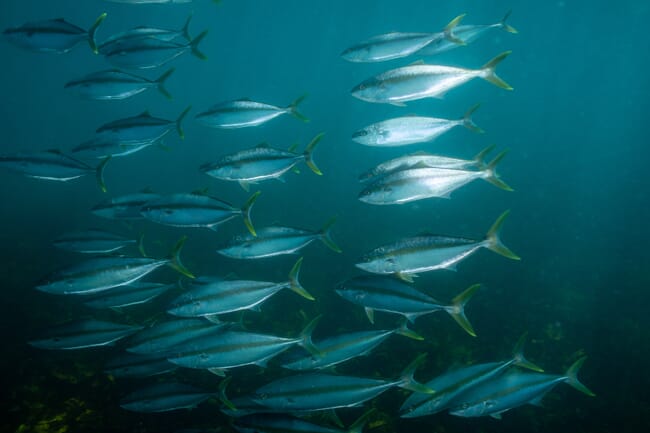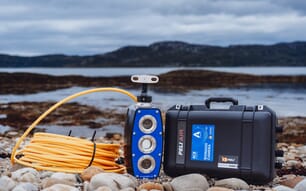
The farm will also stock mussels, sea cucumbers, sponges, kelp and seaweed
Pare Hauraki Kaimoana is owned by the Hauraki Māori Trust Board, which operates in the interest of 12 local iwi - Māori communities.
The application submitted to the Waikato regional council outlines a large 61-hectare operational farm area within the Coromandel Marine Farming Zone (CMFZ), approximately 13.5km from Coromandel, a town located in the Hauraki Gulf.
The site – for which permission was granted this month – consists of five separate blocks and will primarily be used for the farming of yellowtail amberjack (Seriola lalandi), or kingfish, as it is known in New Zealand. Three of the five blocks outlined in the proposal will be used for the farming of kingfish, with each containing 12 pens.
The remaining two blocks will be used for the farming of mussels, sea cucumbers, sponges, kelp and seaweed.
Farah Hancock, a journalist for Radio New Zealand, said in an interview for the Detail – a Radio New Zealand podcast – that the farm has the potential to create around 452 new employment opportunities, and would provide Pare Hauraki Kaimoana and the iwi it represents with an annual profit of potentially up to NZ$135 million (€74 million).
However, despite the consent proposal for construction of the site being granted by the Waikato regional council earlier this month, the proposal was met with objections from conservation groups, including the Royal Forest and Bird Protection Society of New Zealand.
Submitted objections against the development of the site listed concerns over the welfare of iconic marine species, such as marine mammals and penguins, which may get caught in the nets deployed as part of the kingfish pens.
Another key concern stated was the increased nutrient pollution to the benthic environment below the cages – and to the wider area of the Hauraki Gulf – as a result of waste feed and fish excretion.
Dr Drew Lohrer, who appeared as an expert witness for the Waikato regional council, commented on the potential of the farm to add to an already impacted environment.
Quoted in the official hearing documents, Lohrer said: “The Hauraki Gulf is a system under pressure from multiple simultaneous anthropogenic stressors and climate-related change. It is often difficult to detect and predict the effects of additional individual activities, such as those proposed by Pare Hauraki Kaimoana in the CMFZ”.
“However, adding to the stress of a system that is already under pressure, even if the effects of individual activities are deemed to be ‘no more than minor’, risks further degradation to biodiversity and ecosystem functioning,” he added.
In addition to nutrient pollution, the proposal by Pare Hauraki Kaimoana to culture Undaria seaweed species within the farm has raised concerns about biosecurity, as the genus has previously been considered an invasive pest.
However, Dr Barrie Forrest, a marine biosecurity specialist, gave evidence to the Waikato regional council claiming that the biosecurity risk was minimal and manageable.
Forrest is quoted in the official hearing documents saying: “With appropriate mitigation of marine pest risks I consider the potential effects of the proposal can be appropriately managed, and are minor in the context of other biosecurity risks in the Waikato region.”
Despite the concerns raised about the welfare of marine species, nutrient pollution and biosecurity, the consent application for the development of the site has been granted with the caveat of a 100-item-long list of conditions, according to the Detail.
The conditions include restrictions on noise and light pollution, limits on pen size and infrastructure, and restrictions on the use of predator-excluding nets.




